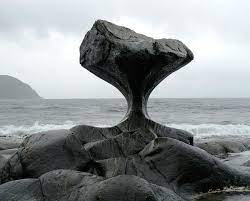


A substantial percentage of our planet is made of rocks. While several rock formations have changed little over the years due to their geography and extent of exposure to various other elements, many others have been extremely transformed to reveal a timeline of the earth’s physical history. The listed natural rock formations were created over centuries, few of them have formed over millions of years, using the hardest materials.
Wave Rock, Australia
The 350 feet long and 47 feet high rock formation is located right outside of Hyden close to Perth in Western Australia. Formed with monzogranite, if photographed in the right way, the rock appears to be in the process of ‘breaking’ on unsuspecting visitors.
Moeraki Boulders,
New Zealand
The massive boulders of calcite-fused mud took over 5 million years to form under the seafloor off the coast of Otago in New Zealand. Like Devils Tower located in the United States, this formation remained hidden until uncovered gradually by forces of erosion.
Goreme Fairy Chimneys,
Turkey
Located in Cappadocia, Goreme Fairy Chimneys is one of the best places to see hundreds of strange rock formations which are the result of wind and water erosion of two different volcanic layers. Due to the ease of carvings into the tuff (consolidated volcanic ash); many of the fairy chimneys (rocks) have been hollowed out over the centuries to create monasteries, storage facilities, and even houses.
Deer Cave, Malaysia
Located in Gunung Mulu National Park in Miri, these caves are 4.1 km long with 169meters in width and 148meters in height. Also known as Gua Rusa or Gua Payau, the cave derived its name from the deer that visit this cave to lick salt-bearing rocks.
Coron, Philippines
Located on the third-largest island in the Philippines, the area around the wrecks has rock formation which is an excellent site for snorkelling, diving, and other underwater activities. Dive sites around Coron include multiple different reef dive sites and ‘Günter´s Cave’, also known as Cathedral Cave because, during a certain time of the day, the sun throws a beam of light through a hole in the cave ceiling, illuminating the inside.